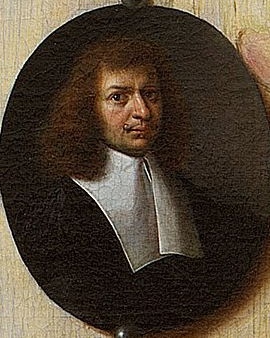In the veiled mist of history rises the figure of Flemish painter Cornelis Norbertus Gijsbrechts. Born sometime between 1625 and 1629, his exact origins are a mystery illuminated only by his impressive artistic legacy. A master of still life and, in particular, vanitas and trompe l'oeil works, Gijsbrechts left a deep mark on seventeenth-century European art. His work was influenced by his sojourn in the Spanish Netherlands, Germany, Denmark, and Sweden, where he made a name for himself primarily as a court painter in Copenhagen. Our collection of fine art prints makes available his outstanding works, which represent a blend of masterful realism and profound symbolism.
Few established facts are known about Gijsbrechts' personal life. It is believed that he was born in Antwerp and married Anna Moons there on April 26, 1648, in the Church of St. James. From this union came his son Franciscus, who later followed in his father's footsteps and became a painter as well. Gijsbrechts' relationship with art was deep and institutional, as evidenced by his membership in the Sodality of Unmarried Men in Old Age, as well as his registration as a "wijnmeester" (son of a master) in the Guild of St. Luke in Antwerp.
When Gijsbrechts left for Regensburg and Hamburg in the 1660s, he began a creative period that cemented his fame. It is believed that during this time he came into contact with the painter Georg Hinz, who had connections with the Danish court. This relationship may have paved the way for Gijsbrechts' time as court painter in Copenhagen from 1668 to 1672. This period marks his most prolific phase, during which he created much of the artistic work we know today. His studio was located in the picturesque Kongens Have Park of Rosenborg Slot, where he created his extraordinary trompe l'oeil and vanitas works.
After his stay in Copenhagen, Gijsbrechts moved to Stockholm in 1672 and was recorded in Breslau (now Wrocław) in 1675. After this date, his trace is lost in the annals of history, with neither his date nor place of death known. Although his personal path remains enigmatic, Gijsbrechts continues to live on in his works. The masterfully crafted art prints of Gijsbrechts that we offer allow art lovers to own a part of this legacy and preserve the legacy of this remarkable Flemish artist.
×





.jpg)
.jpg)
.jpg)
.jpg)
.jpg)
.jpg)
.jpg)
.jpg)
.jpg)
.jpg)
.jpg)
.jpg)
_-_(MeisterDrucke-1440565).jpg)
_-_(MeisterDrucke-1440565).jpg)
_Peinture_de_Cornelis_Norbertus_Gys_-_(MeisterDrucke-959928).jpg)
_Peinture_de_Cornelis_Norbertus_Gys_-_(MeisterDrucke-959928).jpg)
.jpg)
.jpg)
.jpg)
.jpg)
.jpg)
.jpg)
.jpg)
.jpg)
_-_(MeisterDrucke-1322065).jpg)
_-_(MeisterDrucke-1322065).jpg)
_-_(MeisterDrucke-995291).jpg)
_-_(MeisterDrucke-995291).jpg)
.jpg)
.jpg)
.jpg)
.jpg)
_Ec_Hol_-_(MeisterDrucke-985580).jpg)
_Ec_Hol_-_(MeisterDrucke-985580).jpg)
.jpg)
.jpg)
.jpg)
.jpg)
.jpg)
.jpg)
.jpg)
.jpg)
.jpg)
.jpg)
.jpg)
.jpg)
.jpg)
.jpg)
.jpg)
.jpg)
_-_(MeisterDrucke-1441138).jpg)
_-_(MeisterDrucke-1441138).jpg)






